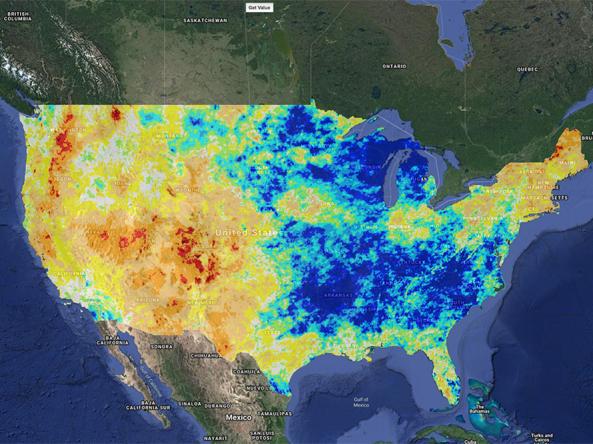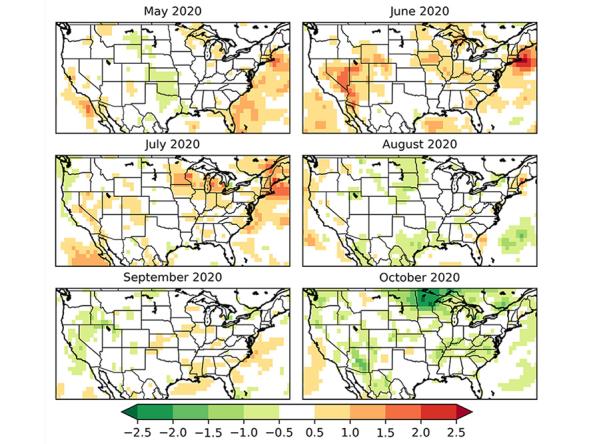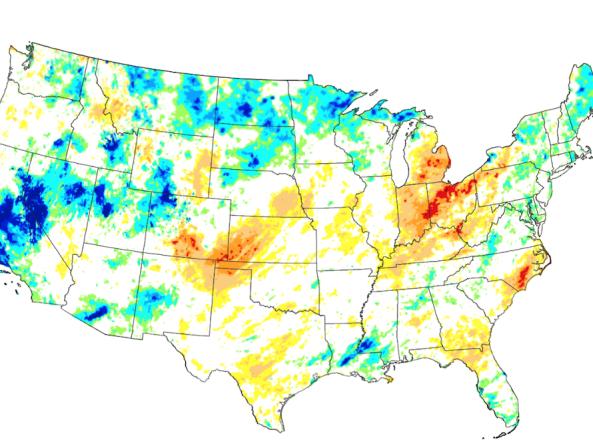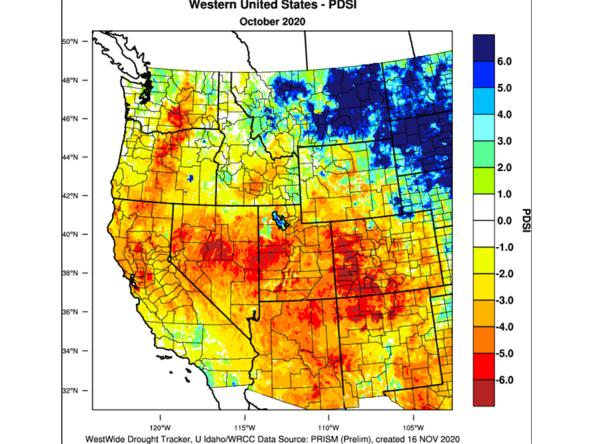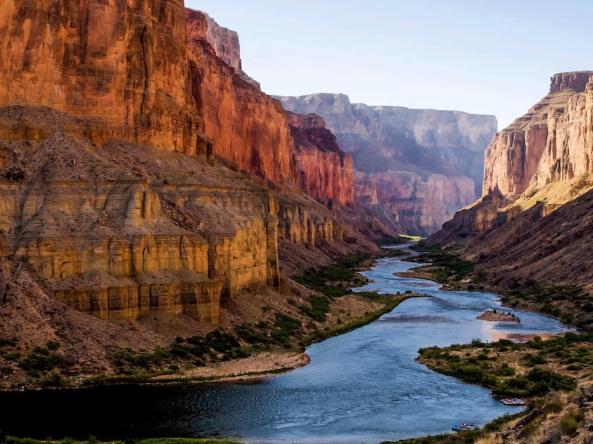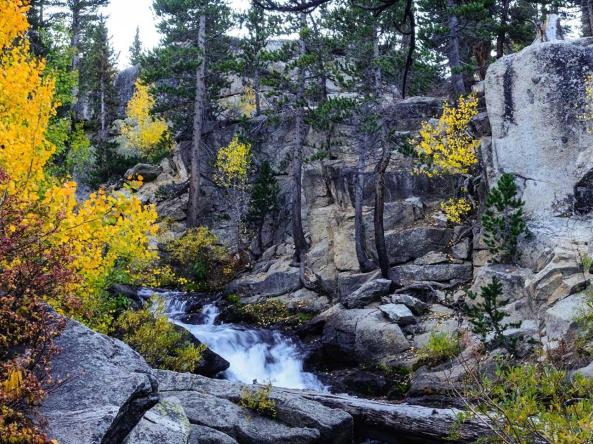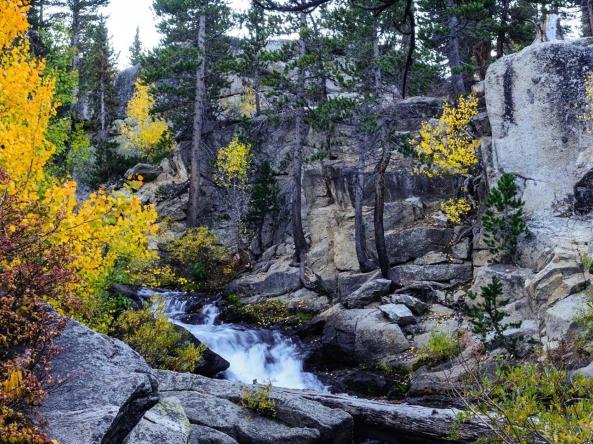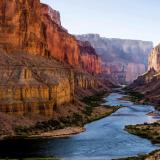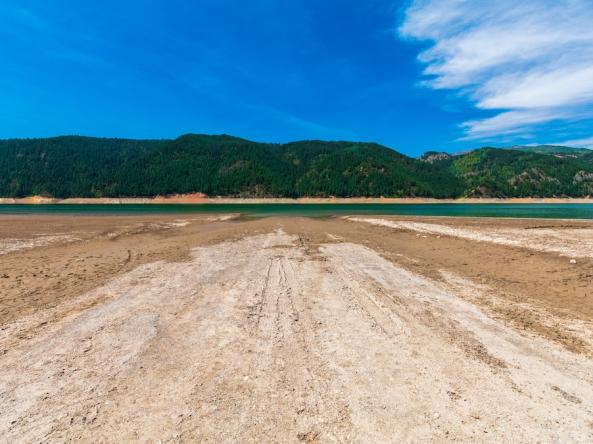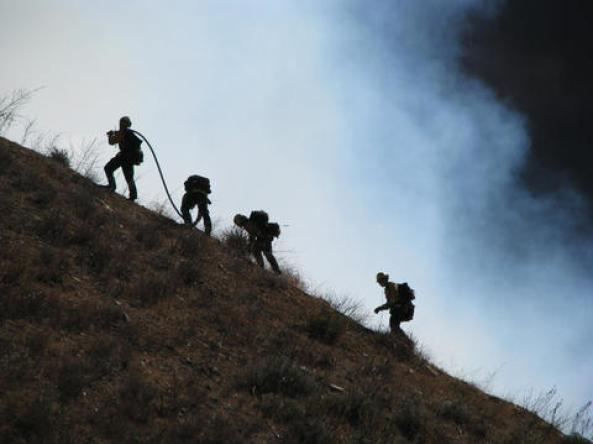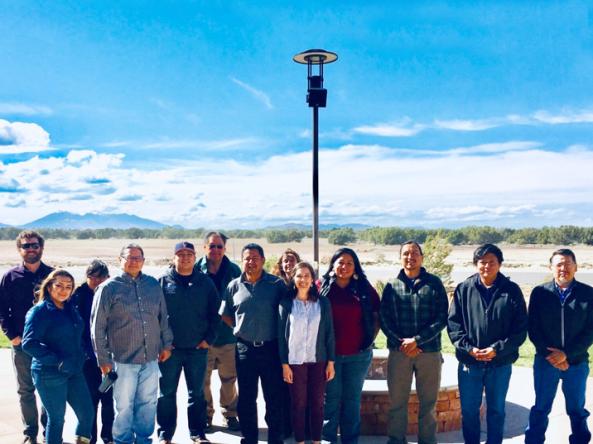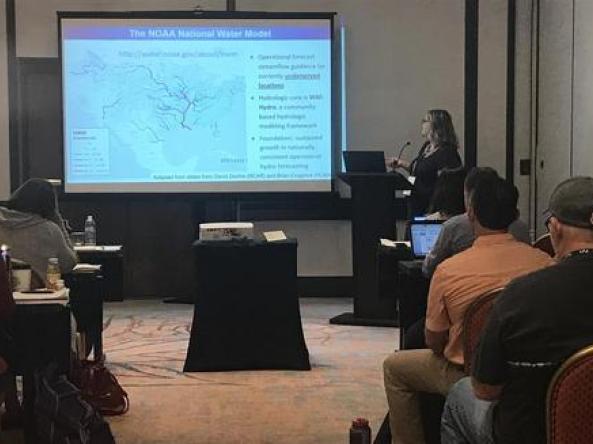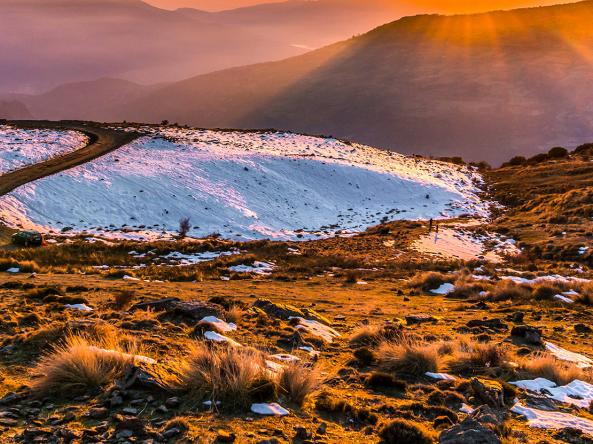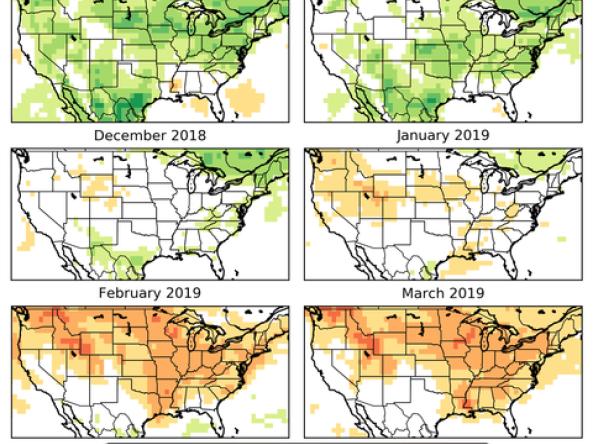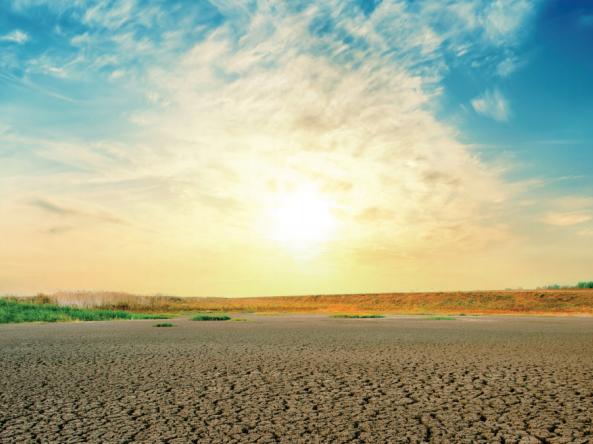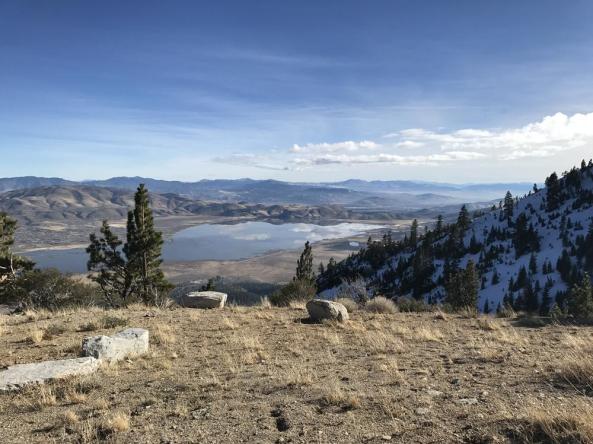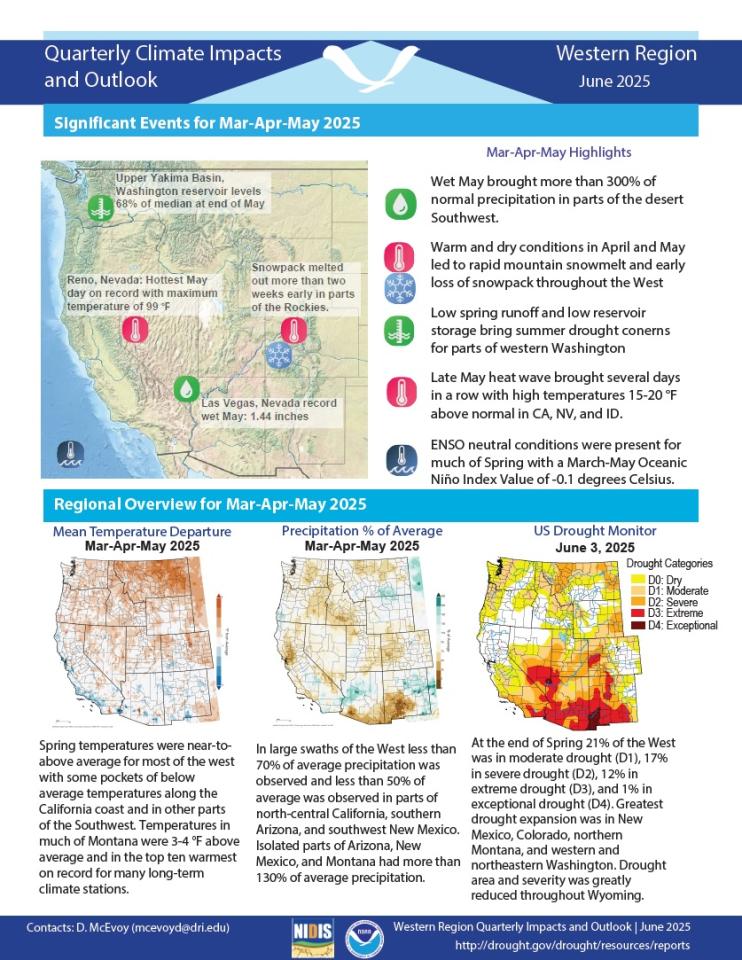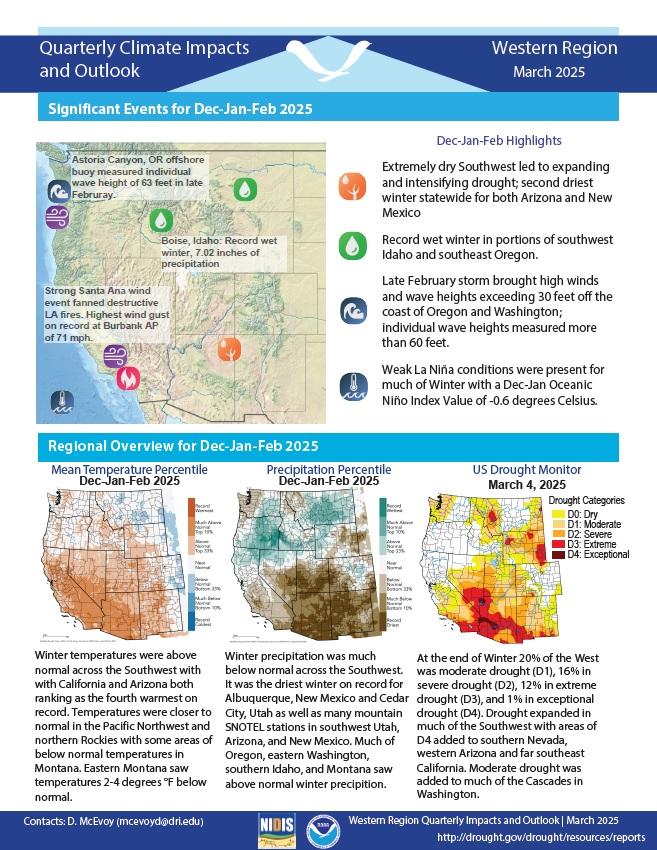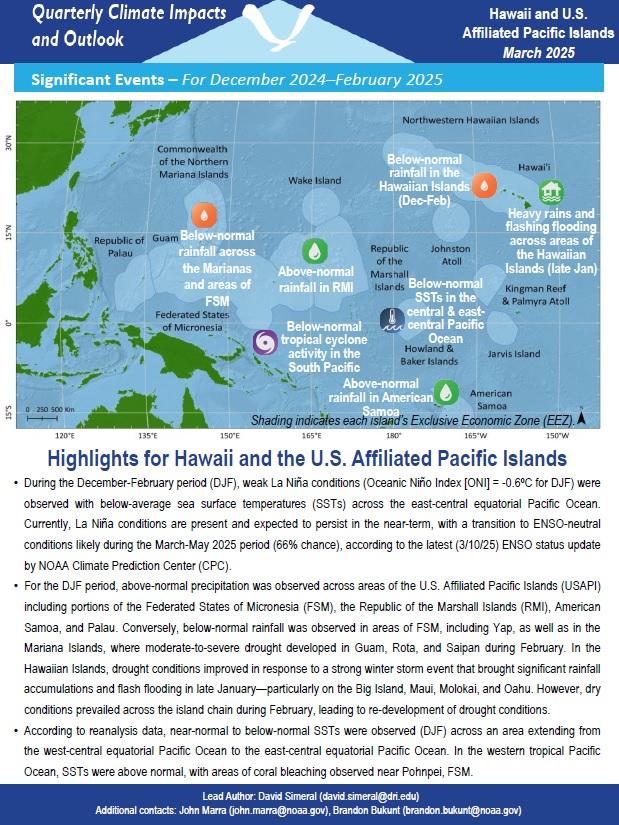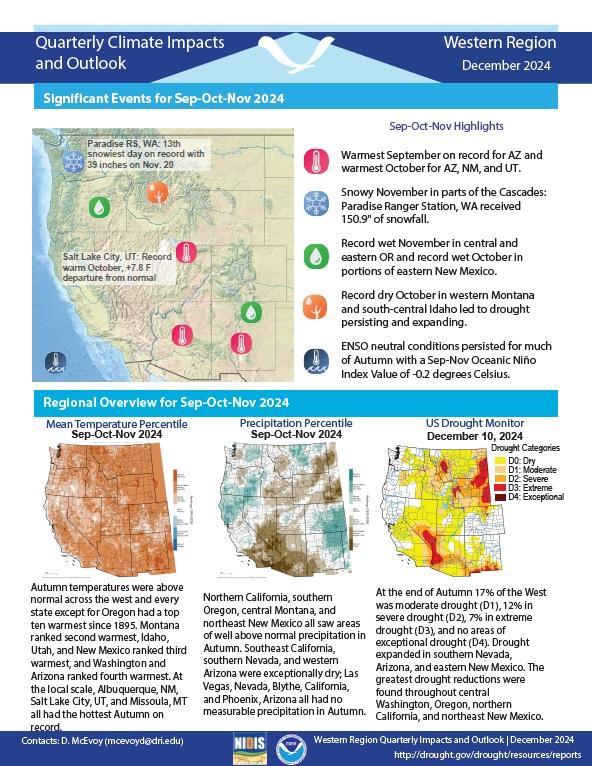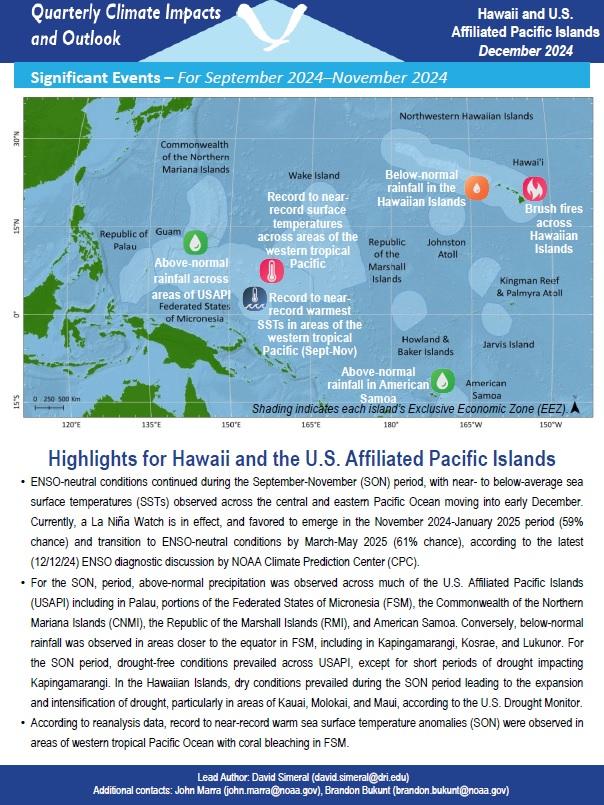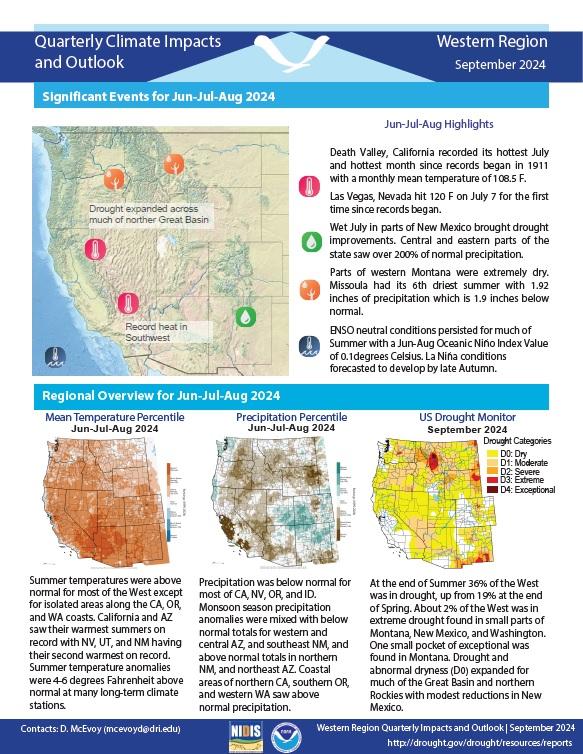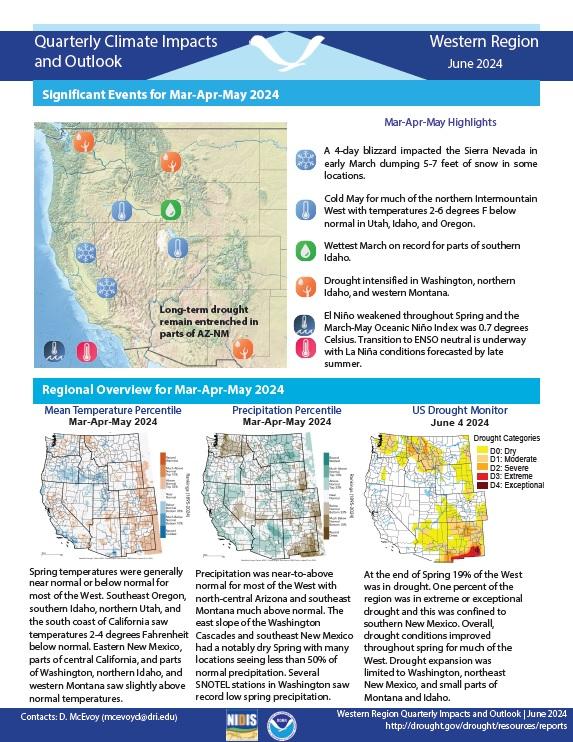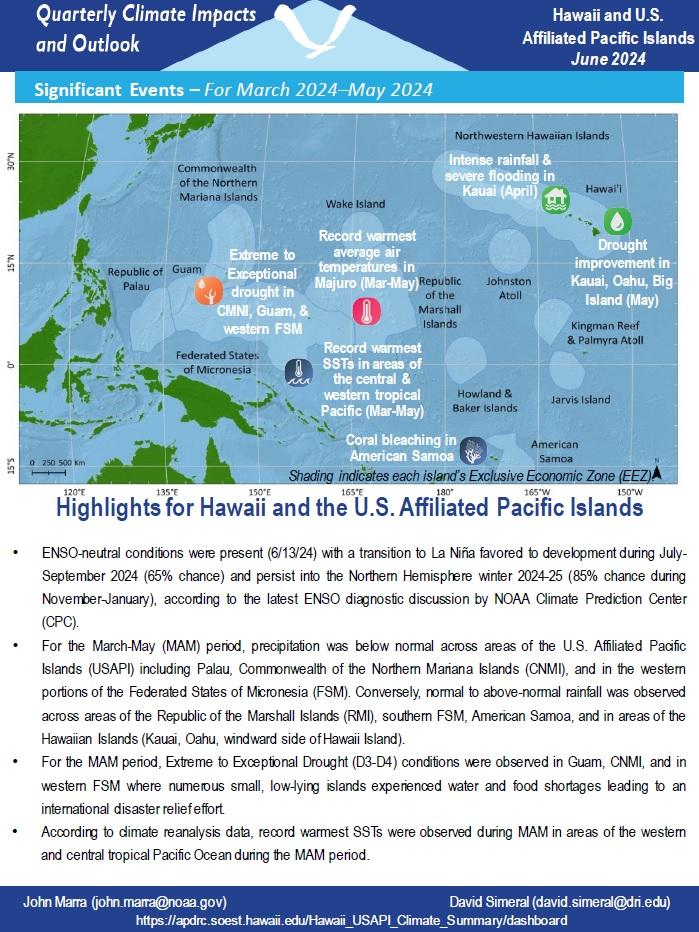The U.S. government is closed. This site will not be updated; however, NOAA websites and social media channels necessary to protect lives and property will be maintained. To learn more, visit commerce.gov.
For the latest forecasts and critical weather information, visit weather.gov.
For the latest forecasts and critical weather information, visit weather.gov.
Logo

Related Data & Maps
Climate Engine allows users to analyze and interact with climate and earth observations for decision support related to drought, water use, agricultural, wildfire, and ecology.
Period of Record
Current Conditions, Historical data (period of record varies)
File Format
images
pdf
csv
This tool shows one-month projections for EDDI, which is an early warning guidance tool that is available for monitoring.
Period of Record
Forecasts
File Format
netcdf-4
These experimental drought blends integrate several key drought monitoring products and indices into a single short-term or long-term product, based on the methodology developed at the NOAA Cl
Period of Record
Current Conditions
File Format
images
pdf
geotiff
The WestWide Drought Tracker (WWDT) provides fine-scale drought monitoring and climate products for the Western United States.
Period of Record
1895 - Present
File Format
geotiff
netcdf-4
netcdf-3
Related Events
Related Webinar Recaps
Related Drought Status Updates
February 13, 2025
April 10, 2025
August 5, 2025
October 17, 2024
January 16, 2025
Related News
Site Section
News & Events
Today, the NOAA Climate Program Office’s National Integrated Drought Information System (NIDIS) and Modeling, Analysis, Predictions and Projections (MAPP) program jointly announced $4.9 million in funding for NOAA labs and research partners to improve drought monitoring and prediction in the American West. This research combines $3.1 million in funding from NIDIS and $1.8 million from the
Site Section
News & Events
California and Nevada’s climate and weather patterns create fire-prone environments for many wildland–urban interface communities, highlighting the value in understanding the relationships between drought and wildfire. More specifically, information is needed on how drought indices are related to fire danger outputs that are commonly used in fire management.
With NIDIS Coping with Drought
Site Section
News & Events
In an era of increasing wealth of earth observations, approaches for quickly accessing, analyzing and visualizing environmental data to better inform decision making at relevant scales is needed. Climate Engine enables users to utilize on-demand cloud computing and visualization to analyze and interact with climate and earth observations for decision support related to drought, water
Site Section
News & Events
Drought can have a significant impact on the management and operations of water utilities, from loss of water supply and poor source water quality to increased demand from customers and reduced revenues. Changing conditions in precipitation, snowpack, soil moisture, temperature, and evapotranspiration must be well monitored and better forecasted to provide water managers early warning of drought
Site Section
News & Events
The 2018-2019 water year is now underway, and with all eyes on the developing El Niño, there are many people wondering whether this winter will be any better than last year - particularly for snowpack in the West.
Last winter was marked by below-average precipitation and above-average temperatures through the first several months in many places across the country - with relief not
Site Section
News & Events
The Evaporative Demand Drought Index, also known as EDDI, is an experimental drought monitoring and early warning tool that looks for drought using atmospheric evaporative demand (also known as the “thirst of the atmosphere”). So far, EDDI maps and data have been made available for near-real-time and historical monitoring; now, with the help of the NOAA-National Centers for Environmental
Site Section
News & Events
Written in collaboration with the Western Regional Climate Center (WRCC)
The physical relationship between drought and fire is complex, due to the many and varied first- and second-order effects at national, regional, and local scales. The timing, intensity, and frequency of drought events can have wildly divergent impacts on fuel flammability, fire behavior, and subsequently, wildland fire
Site Section
News & Events
Visit the new snow drought page
The beginning of the 2017/2018 winter season brought little rain and snow, giving rise to concerns about snow drought across the Western United States. Snow drought is defined as a period of abnormally low snowpack for the time of year, reflecting either below-normal cold-season precipitation (dry snow drought) or a lack of snow accumulation, despite near-
Related Documents
Document Date
September 2025
Document Date
September 2025
Document Date
June 2025
Document Date
June 2025
Document Date
March 2025
Document Date
March 2025
Document Date
December 2024
Document Date
December 2024
Document Date
September 2024
Document Date
September 2024
Document Date
June 2024
Document Date
June 2024
Related Research


